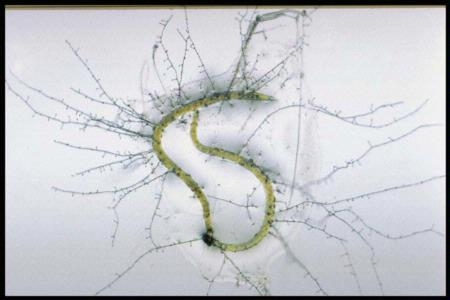Rhizospheres are a microscopic and fascinating place. At only 10 micrometers to a few millimeters wide, a rhizosphere is the zone that directly surrounds a plant root. This area is teaming with microbes, and it is where plants absorb most of their water and nutrients.
As roots grow through the soil they create changes in the physical, chemical and biological soil that surrounds them. Roots produce a cap on the tips to protect it as it grows. This cap produces a sticky material called mucigel to help it push through the soil. As the root grows through the soil, the protective cap gets sloughed off. Both the mucigel and the root cap cells add carbon to the soil within the rhizosphere. The microbes use the carbon for growth and reproduction.
The microbial communities in the rhizosphere can promote disease; however, other microbes in this zone also allow plants’ access to minerals, protect roots from pathogens, kill nematodes, help to decay organic materials, and provide food for the soil food web. Healthy microbe communities within this zone are vital to the health of the plant. Providing an environment that encourages healthy plants also supports microbial communities.
More detailed information about the interactions that take place in rhizosheres will be covered in future blog posts.
